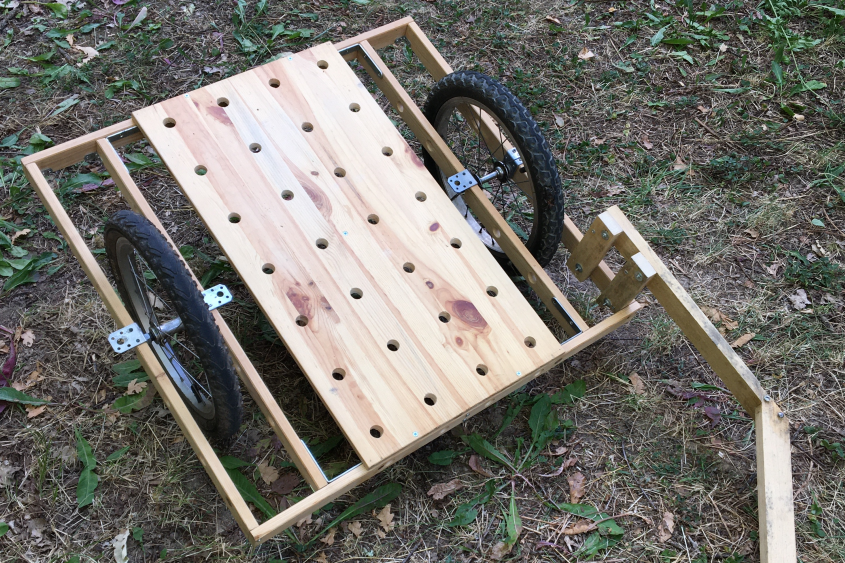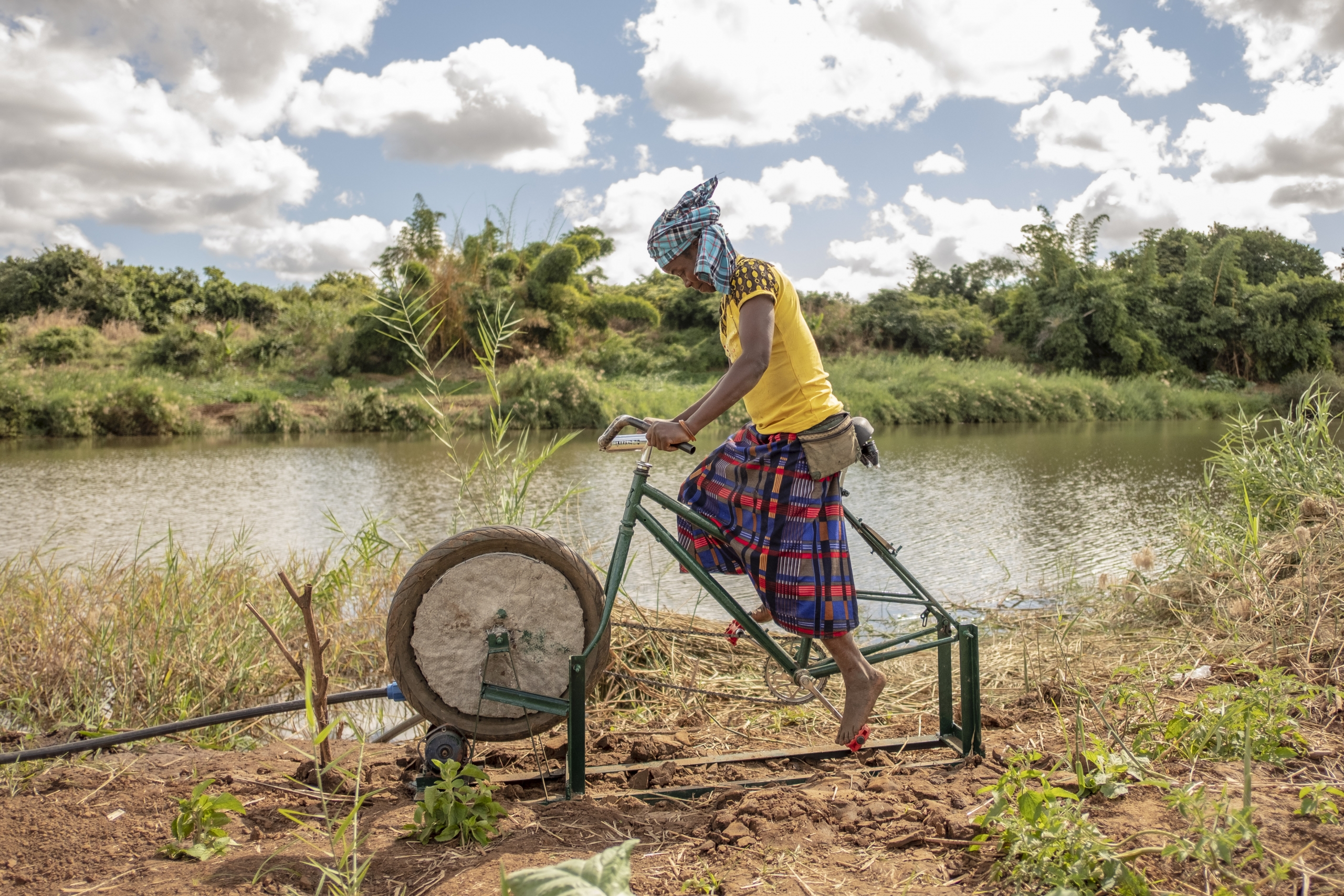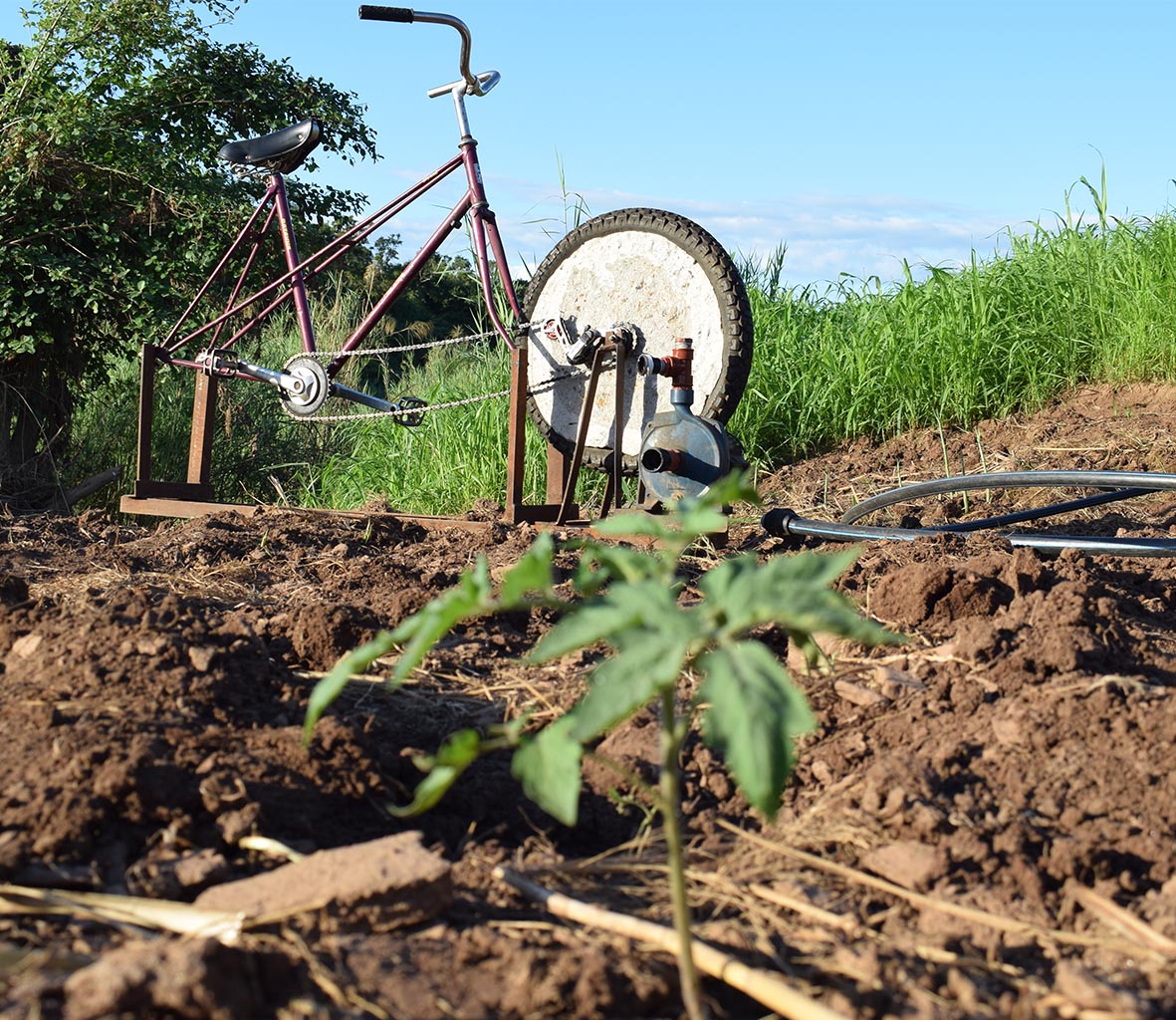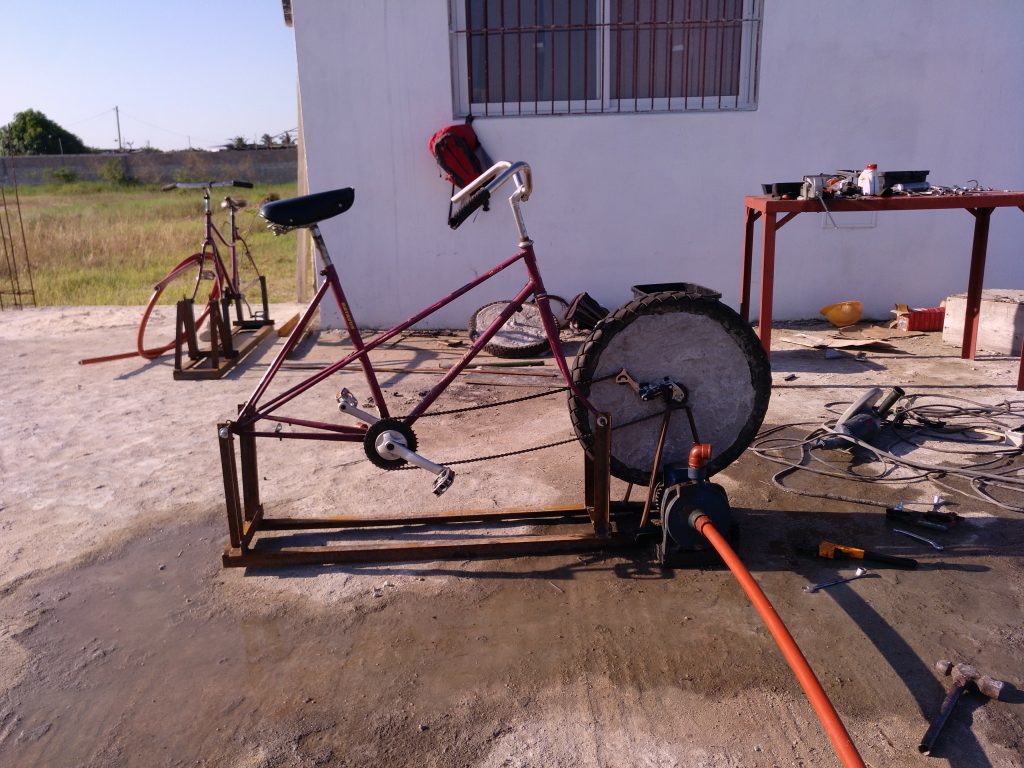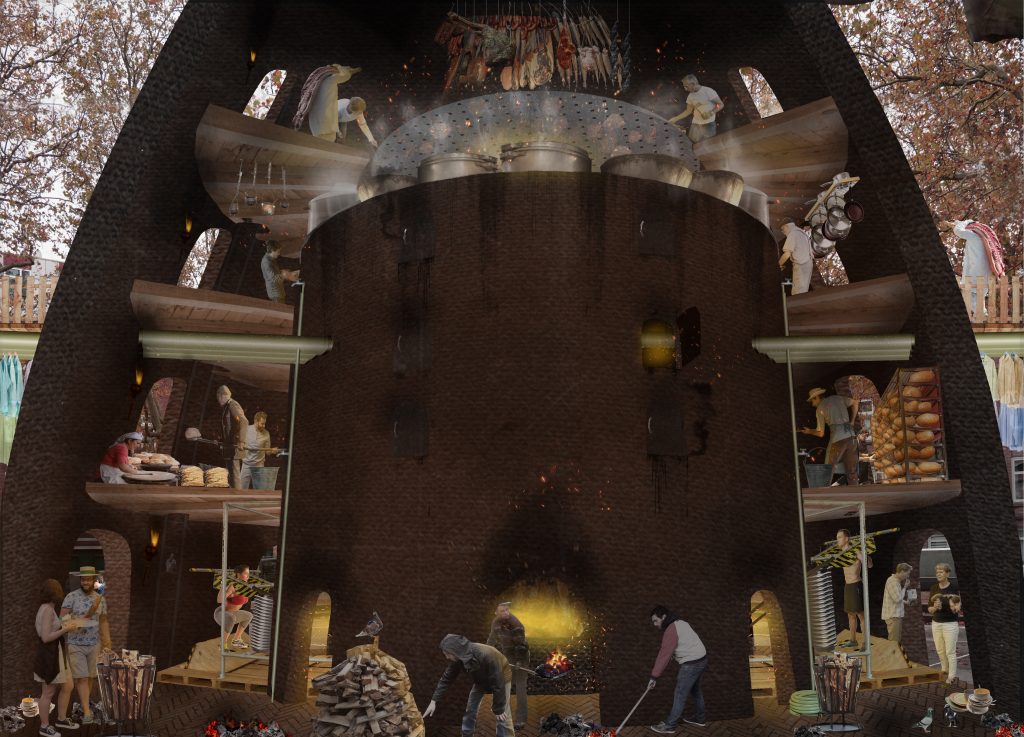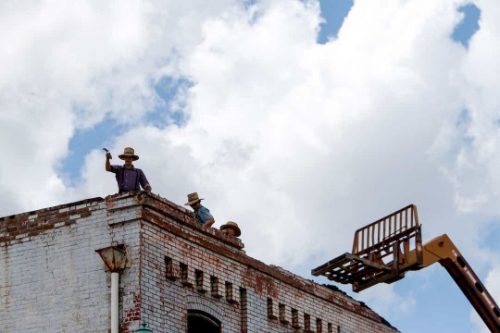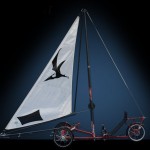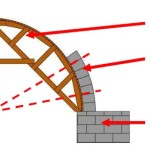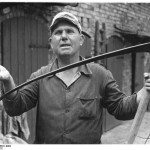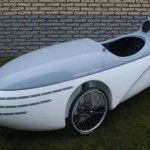Musician Germán Canyelles uses Low-tech Magazine’s bike generator to power his electric guitar. The guitar amplifier and pedals are plugged into an inverter connected to the 12V circuit of the bike generator. No batteries are used. Recorded at Akasha Hub, Barcelona.
Human Powered Electric Guitar
Hand-Cranked Canal Bridge in London
This London pedestrian bridge is entirely manual, with a hand crank to open it for boat traffic. In the video, the architects also discuss how the haptic feedback provided by hand cranking allows issues to be identified and prevents damage. Thanks to Mathew Lippincott.
DIY Wooden Bike Trolley
Marie Verdeil made a tutorial for a simple wooden bike trolley. It is available in English and French on the Low Tech Lab wiki.
Method to create a simple bike trolley, using up-cycled materials. Easily fixated to every bike (adult size). Holes on the board help attach any kind of cargo. It’s made out of wood and simple hand tools, no welding required. Dimensions are detailed and can easily be adapted to the material available.
I tried to create a trolley, which can replace the car to go to the market / grocery shopping. No need to transport heavy cargo, but big objects (cardboard boxes, crates, wood, etc.) – Therefore it needs to be easily adaptable, with the option to fix a crate on the board. + Priority goes to second-hand materials!
Bike Powered Water Pumps
The Spanish NGO Azada Verde works with rural communities in Mozambique to develop sustainable and local food systems. Their bike powered water pumps save the local population much time fetching water. The pumps each supply 10 litres of water per minute. So far, 67 bike powered water pumps have been installed.
All images by Azade Verde.
Human Powered Neighbourhood: The Community Kitchen
It’s 2030 and the 14,000 residents of the first carbon neutral neighbourhood in the Netherlands gather at the communal fires, where they cook and eat together.
Read more: Human Powered Neighbourhood: The Community Kitchen.
Amish Hand-Demolish Building in Tennessee
Who to call when you need your building “hand-demolished”? To the general public, “Amish” often equates to handcrafted – meaning hand-milked cows, handmade quilts, hand-built furniture, and the like (whether that perception is always accurate is another question).
And in that spirit, one Tennessee city found that an Amish hands-on approach was exactly what they needed to remove a historic structure. The Clarksville Leaf-Chronicle reports that an Amish crew of workers has been deconstructing the city’s 140-year-old Hodgson/Dabbs building, brick-by-brick.
Read more: Amish Hand-Demolish Building in Tennessee, Amish America, June 27, 2019. Image by Henry Taylor for the Leaf Chronicle.
